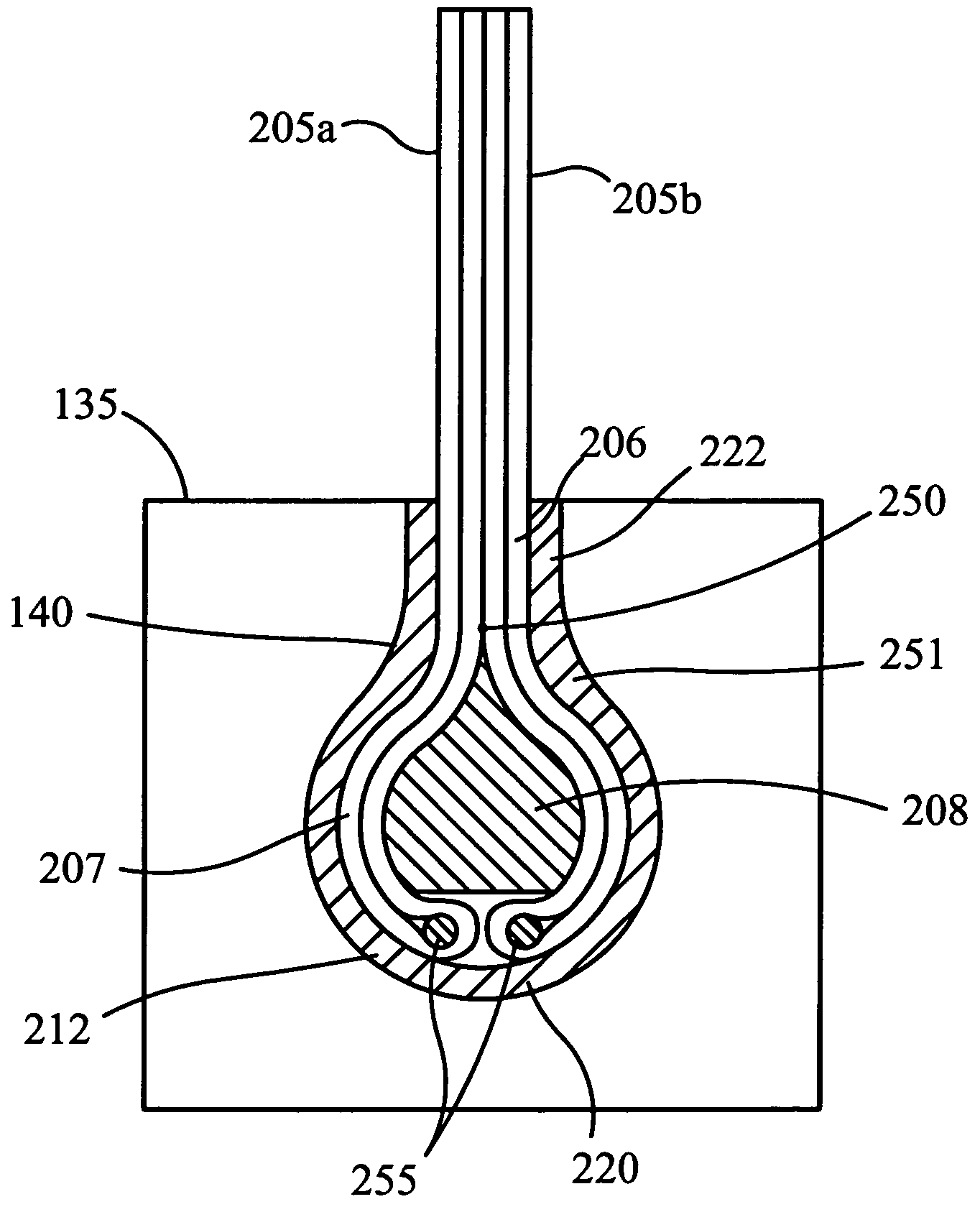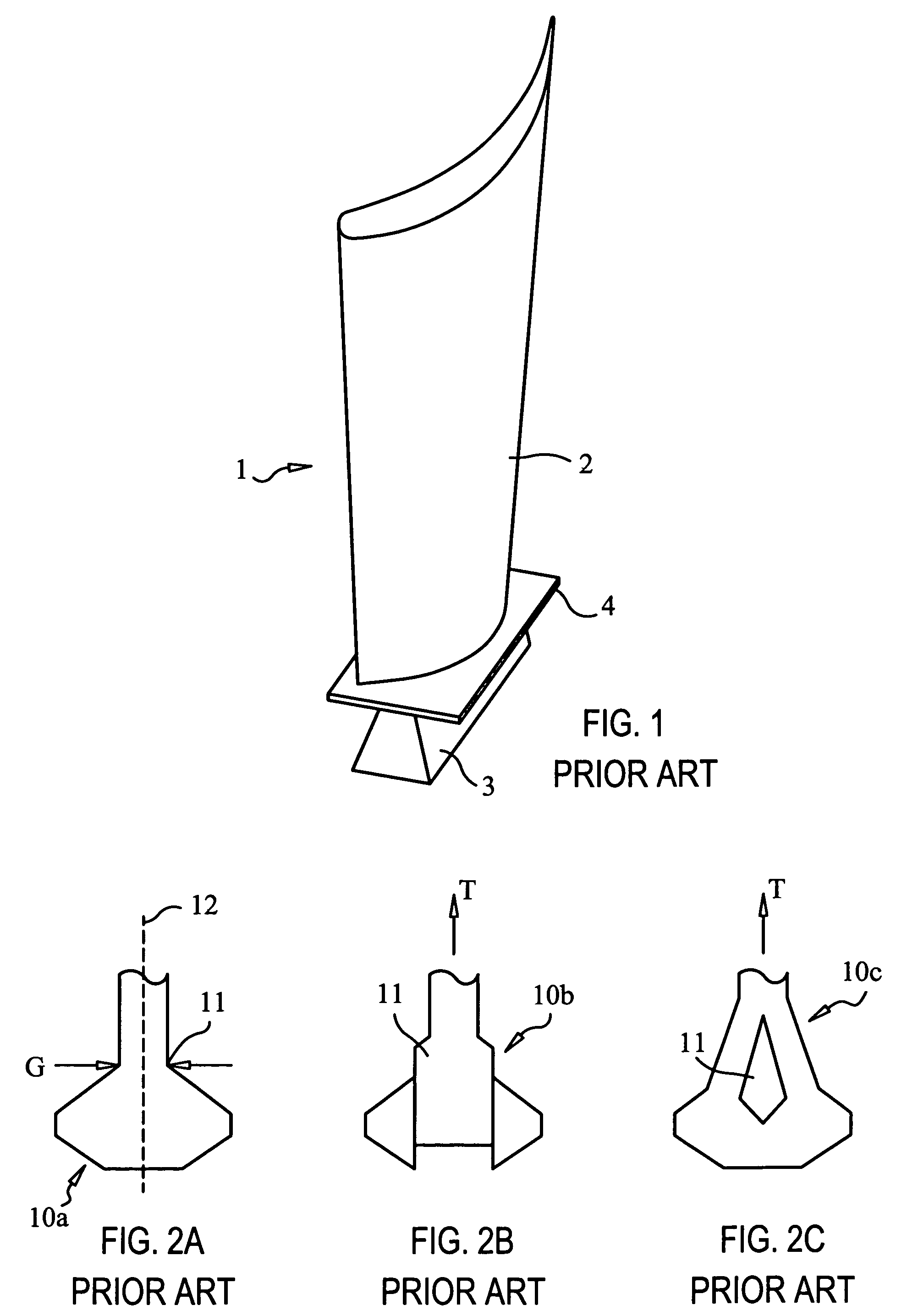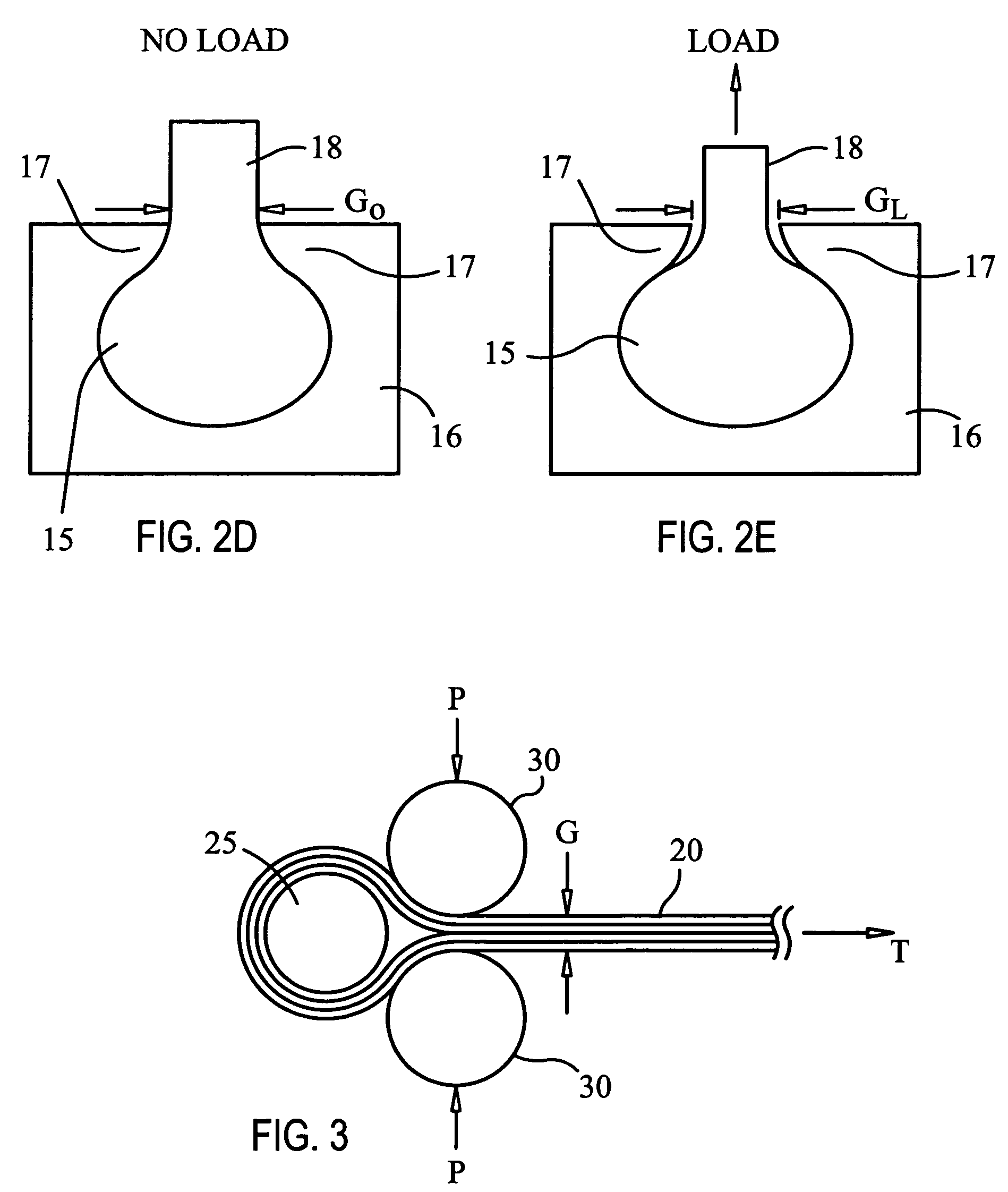Laminated turbomachine airfoil with jacket and method of making the airfoil
a turbomachine and airfoil technology, applied in the field of laminated airfoils, can solve the problems of composite materials being fragile and weak under compression or shear, essentially unidirectional strength of composite materials, and preventing laminate separation, the effect of high centrifugal force on the blade and greater thickness
- Summary
- Abstract
- Description
- Claims
- Application Information
AI Technical Summary
Benefits of technology
Problems solved by technology
Method used
Image
Examples
Embodiment Construction
[0026]FIG. 3 is a simplified schematic of the delaminate-preventing principle employed in the present invention. A number of laminates 20 of a material (either a fiber reinforced laminated composite or a sheet metal material) are wrapped around an insert 25, the laminates being bonded together to form the airfoil portion of the blade, the airfoil portion extending along a longitudinal axis 21 of the blade. A point where the laminates digress (or, separate) from one another in the airfoil portion is considered to be a critical point, the critical point being the place where the laminates would begin to delaminate under extreme centrifugal loading of the blade. Cylinders 30 represent a point of contact on the inside surface of the jacket near the critical point. Under extreme centrifugal load, a tensile force T is created along the blade. Since the laminate wraps around the insert 25, the tensile force T will act to pull the insert 25 up against the surface of the cylinders 30. Since ...
PUM
 Login to View More
Login to View More Abstract
Description
Claims
Application Information
 Login to View More
Login to View More - R&D
- Intellectual Property
- Life Sciences
- Materials
- Tech Scout
- Unparalleled Data Quality
- Higher Quality Content
- 60% Fewer Hallucinations
Browse by: Latest US Patents, China's latest patents, Technical Efficacy Thesaurus, Application Domain, Technology Topic, Popular Technical Reports.
© 2025 PatSnap. All rights reserved.Legal|Privacy policy|Modern Slavery Act Transparency Statement|Sitemap|About US| Contact US: help@patsnap.com



